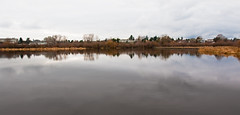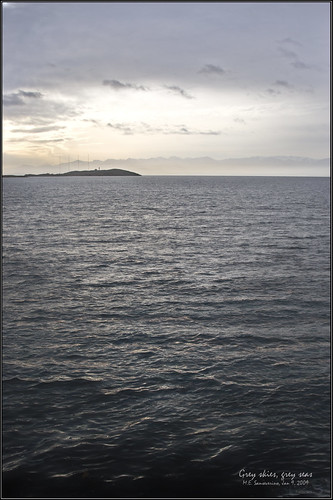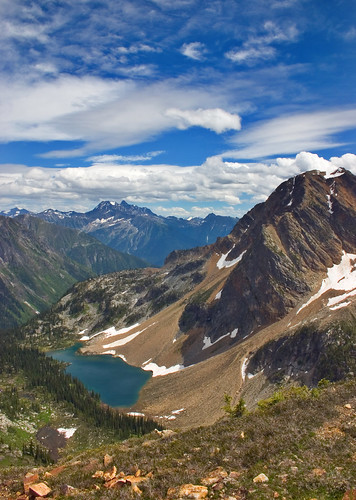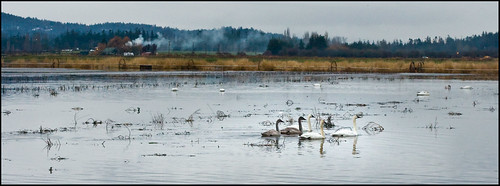John Muir , the old man of the modern environmental movement, reminded us back at the turn of the century that nature goes on with or without us: "This grand show is eternal. It is always sunrise somewhere; the dew is never all dried at once; a shower is forever falling; vapor is ever rising. Eternal sunrise, eternal sunset, eternal dawn ...each in its turn, as the round earth rolls.
At this time of the year we on southern Vancouver Island get amazing sunrises and sunsets. And, even though I know there will be another one along in some few hours, I still look up at around 4 o'clock and say "Time to head down to the ocean. This is going to be a great sunset -- I can't miss it!"
I took this shot January 19, 2009, on Willows Beach, looking south-east over Oak Bay and the distant Juan de Fuca Strait, to Mt. Baker. Baker is an active volcano and has a constant cape of snow and ice. In January, when the air is cold and the haze of pollution from Vancouver to the north, and Seattle to the south is noticeably less, Mt. Baker stands out sharply.
The soft run of pastel colours makes a good backdrop to this shot. I particularly like the blend from blue to purple-pink. I needed to use a graduated neutral density technique for this image. I set my camera's exposure for the mountain itself. This turned out to be 1/40 second at f4, with an ISO of 200. I was using my 24-105 zoom, at 105. Moreover, I wanted to emphasize the fading sky light, so I stopped down 1/3 of a step. This made for a pretty dark foreground and ocean.
Cue the graduated neutral density technique -- I don't own the hardware necessary to put a graduated ND filter on my lens (quite cumbersome -- to say nothing of pricey), but Lightroom 2.0 has a technique that mimics the process. A typical ND filter had a graduation from grey to clear glass. Usually the greyest portion covers the brightest part of the photo -- typically they sky. With the sky now a bit darker, the photographer can get a picture with detail in both the sky and foreground -- nothing is "washed out".
I used Lightroom to apply a graduated filter to the image after the fact. This let me keep the darker sky and bring up the brightness of the ocean and foreground. I have to say, I'm pleased with the effect, but it is good to know that if I fail I can always wait for another glorious sunset. John Muir assures me that this grand show is eternal.
Happy New Year!
-
M.E. Sanseverino posted a photo:
[image: Happy New Year!]
I was out on Jan 4, 2026 for the first king tide of the year. There was a
bit of wave action, ...
21 hours ago









